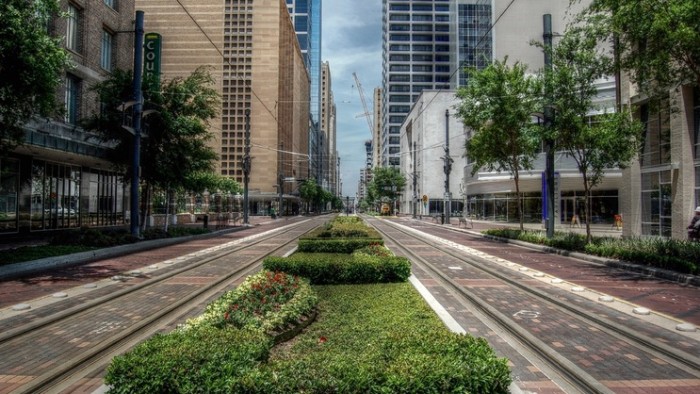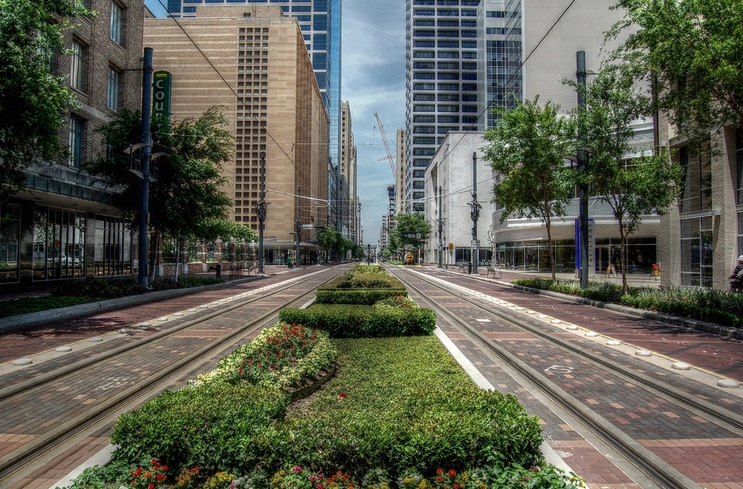How Houston Could Reduce Storm Flooding


grass could be planted. (Credit: Jerald Jackson)
National news coverage of Hurricane Harvey in 2017 painted a bleak picture of Houston’s ability to face severe storms. Some articles portrayed urban sprawl as having wiped out the city’s ability to cope with natural disasters, saying Texas policies were to blame.
But if you ask the staff at Katy Prairie Conservancy (KPC) how they could use financial contributions to help reduce or eliminate flood risks in Houston, you’ll hear a very different story. They have been fiercely resourceful in leveraging entrepreneurial solutions to fund land conservation for the Katy Prairie. And with an infusion of capital and an expansion of partnerships, they could protect more land and help Houston weather future storms.
Katy Prairie is an important piece of the vast Coastal Prairie that stretched from the Texas Gulf Coast all the way to Canada. It provides a haven for biodiversity and an environment for recreation in Houston.
Mary Anne Piacentini, president and chief executive officer of KPC, said she recommends four nature-based solutions to reduce flooding:
- Restore the Addicks and Barker reservoirs to improve their performance by removing invasive species and accumulated sediment.
- Use natural waterways to slow and hold floodwaters.
- Conserve more land and restore prairies and wetlands there to hold water while also providing other community benefits.
- Decrease runoff by replacing conventional turf with Habiturf, a special mix of prairie grasses that absorbs water effectively.
“When Houston’s decision makers consider flood prevention, they often do not invite environmental organizations to the table,” Piacentini said. “Therefore, they don’t take advantage of the knowledge of groups that are familiar with local ecosystems. We’ve got to encourage elected officials and the business community to explore the value of using nature-based solutions.”
Houston is a fast-growing metro area that is expanding to the west and northwest – and paving over its prairies and wetlands in the process. A handout from KPC quotes Houston-Galveston Area Council as projecting that the area’s population will more than double between now and 2040.
Meanwhile, Katy Prairie has grown smaller due to development – shrinking from close to 750,000 acres to 200,000 acres. KPC owns only 14,000 acres, according to the handout.

years. (Credit: Daniel Gillaspia)
Financing for Mitigation
According to the June 2017 report “Financing Natural Infrastructure for Coastal Flood Damage Reduction,” a variety of financing approaches can be leveraged to fund green infrastructure to mitigate coastal floods.
The report was coauthored by Middlebury Institute of International Studies at Monterey, The Nature Conservancy, University of California Santa Cruz, Wildlife Conservation Society, and Lloyd’s Tercentenary Research Foundation.
Globally, from 1995 to 2015, floods were responsible for 46 percent of all natural-hazard expenses, the Middlebury report said.
Piacentini said additional land conservation and restoration would help mitigate flooding and should be considered in addition to engineering-based solutions or gray-infrastructure projects.
“Land conservation and restoration won’t solve all flooding problems, but they can help resolve them while also providing other benefits to the community. These benefits include recreation, agriculture, and habitat. They also include air- and water-quality improvements,” Piacentini said. “However, large-scale land conservation often requires public-sector participation. This is because the expense, while relatively modest, is still considerable.”
How does green infrastructure fit into existing disaster financing solutions? Not very well, currently.
The Middlebury report said reefs, mangroves and wetlands are well-known to reduce storm-related flooding. During Hurricane Sandy, marsh wetlands lowered damage costs by over $625 million. Researchers have also analyzed the potential benefits of natural infrastructure for the Gulf Coast and found it was very cost-effective.
Because these approaches are seen as novel, they are viewed as more difficult to fund, according to a comment KPC quoted from Stanford Law School Coastal Policy Lab.
Several federal programs are available, but according to the Middlebury report, their financing tends to fluctuate.
“Land conservation on a scale like what we hope to accomplish has generally been supported at a federal or philanthropic level,” Piacentini said. “There’s been very little state or local governmental support for land trusts here, although many of the counties and cities in our region support land conservation for parks and along bayous. They also support flood-mitigation efforts.”
“Developing alternative, entrepreneurial sources of revenue is an avenue that KPC has successfully pursued,” Piacentini said. “KPC owns a working cattle ranch. It has developed a stream mitigation bank and a wetlands mitigation bank.”
“We’ve tried a number of things – some work and some don’t,” Piacentini said. “We’ve worked to operate the organization like a business but with a nonprofit mission so that any ‘profit’ goes back into saving land and doing good for the region.”
“Mary Anne was one of the first users of wetland mitigation banking services and has been very successful working with the federal agencies on habitat,” said Patrick Coady, senior director at Seale & Associates. “The backdrop is that in Texas, over 95 percent of the land is privately owned. There’s a culture and an ownership pattern that makes it very difficult to mobilize financial support from state and local governments.”
“KPC has been fortunate that the Harris County Flood Control District has supported our efforts and helped us expand land protection on the prairie. The district placed flooding easements on KPC’s land, which allowed us to continue to manage the land for wildlife habitat and recreational programs. It also ensured that these lands held water when appropriate. We used those payments to protect additional land,” Piacentini said.
Coady said there are a variety of examples of the specific challenges Texas environmental nonprofits face. “In Texas, they don’t often undertake environmental bond issues. You have to figure out a way to make the economic case and have dollars flow into the land preservation for issues like flood control.”
KPC attempted to start a conservation-buyer program in 2007, right before the recession. Piacentini said it didn’t take hold in 2008 because people were not buying land during the recession.
Now, KPC is trying a conservation-buyer program again in the hope that people interested in hunting or recreational opportunities might purchase a property that is surrounded by other conservation lands, Piacentini said. This would allow them to place a donated or purchased easement on the tract, thereby expanding KPC’s preserve system. They could then offer a tax break or lower purchase costs.
Saving the Bayous
“Houston is extremely flat,” Piacentini said. “We have rivers and lots of creeks and bayous. In the past, many groups felt the way to deal with flooding was to get the water out as fast as possible. A lot of bayous and creeks were channelized and concreted in. That’s good for getting the water out fast, but bayous left in their natural state can find their own path.”
According to KPC staff, the natural bayous can prevent drainage systems from being overwhelmed and slow down floodwaters, thereby keeping neighborhoods safer.
Houston has already tried removing concrete from the banks of one bayou and restoring them to their natural state. This pilot project for Sims Bayou prevented all of the local houses from flooding during Hurricane Harvey. Based on this result, Piacentini said Houston decision makers should study replacing the banks of the bayous throughout the city.
Seeding New Turf
A second high-leverage solution Piacentini said would make a difference involves developing and marketing a grass mix to replace conventional lawns and grass in parks, along esplanades, and in other areas with absorbent prairie to reduce flooding. The Habiturf project at Ladybird Johnson Wildflower Center has created similar mixes for Austin and Dallas.
“We’re hoping to develop a Habiturf mix for Houston,” Piacentini said. “This particular species doesn’t really need watering except when you’re at the beginning stages of planting. It only needs to be mowed around three times a year.”
Although some homeowners might be concerned about the visual result of planting prairie grass, Piacentini said she is confident they’ll approve of it. “It looks pretty. Your homeowners’ association isn’t going to complain that you’re going to have a jungle in your yard because these grasses are only five to seven inches high. Short grass is a Texas tradition too. It’s deeper-rooted and more-absorbent.”
Restoring native prairie vegetation decreases water runoff and flooding, increasing soil absorption of water and slowing floodwaters on land, a handout from KPC said. According to Natural Resources Defense Council, a 1-percent increase in soil organic matter due to tallgrass prairie restoration allows the soil to hold 20,000 gallons more of water per acre.
If planting prairie grass is so advantageous in Houston to prevent flooding, why isn’t it happening yet? According to KPC staff, the initial study to develop the Habiturf for the Houston area will cost $400,000. The nonprofit is working to identify partners who will assist with the necessary funding to start the project.
Note: The Nature Conservancy has contributed to CFN.
To comment on this article, please post in our LinkedIn group, contact us on Twitter, or use our contact form.